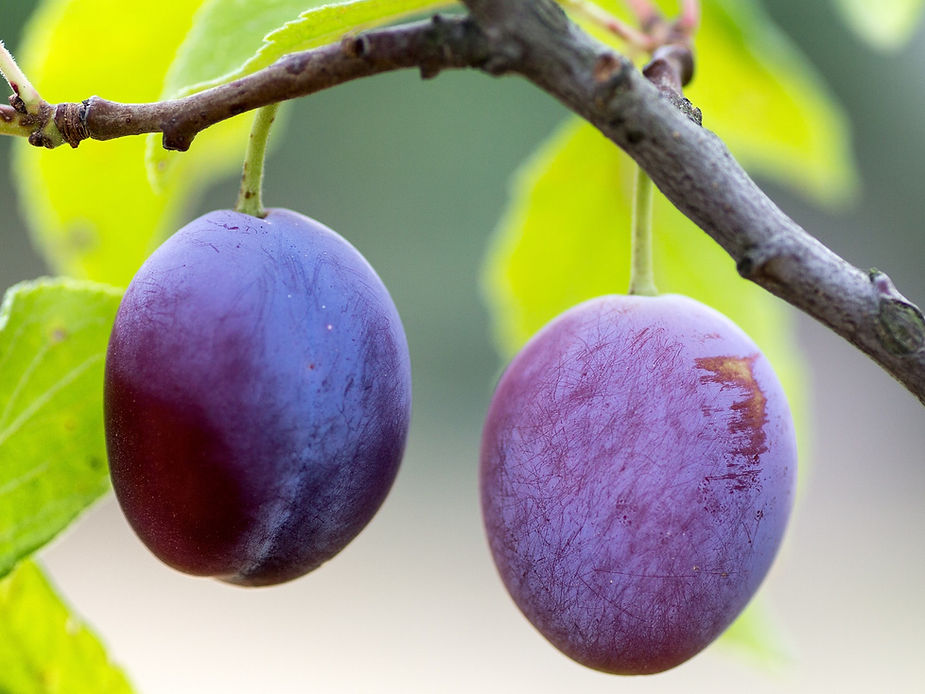California produces over 90 percent of all plums grown in the United States and most of that production happens in Fresno and Tulare counties! According to the University of California Davis, approximately 250 varieties of plums grow here. These varieties are divided into two main categories: Japanese and European.
Plums are available from late May through October. For simplicity, plums are generally identified in the store by skin color – red or black.
Emerging research suggests that many varieties of plums can be considered a “superfood” thanks to their high level of antioxidants. Research conducted by AgriLife Research at Texas A&M University found that many varieties of plums and plumcots matched or exceeded the much-touted blueberry in antioxidants and phytonutrients associated with disease prevention. Plums are also fat free, saturated fat free, sodium free, cholesterol free and a good source of vitamin C.
SELECTION AND STORAGE
There are many varieties of fresh plums grown in California but most are sold in stores as simply red or black. The skin color has no bearing on flavor or sweetness, it’s merely a varietal characteristic. Plums have subtle differences in flavor from variety to variety, far more so than peaches or nectarines. Look for uniformly firm fruit. Avoid overripe fruit that feels “watery” or fruit that has shriveled skin. Plums will continue to ripen at room temperature. Once the fruit reaches your desired softness, refrigerate it to keep it that way. Plums will last for a week or more in your refrigerator.

Plums and plumcots often have a white or silvery colored “coating” on them. This natural, waxy, protective coating is produced by the fruit itself. Most of this coating is washed off in the packing process. Some varieties are considered too delicate for the packing line equipment and are packed carefully by hand, bypassing the washing process. Fruit packed in this manner is known as “bloom on” and is often considered more desirable for its “straight from the orchard” appearance. Regardless of the level of bloom on your plum or plumcot, all fruit should be thoroughly rinsed with water before eating. The bloom is completely natural and harmless but if you want to remove it completely, simply wipe the fruit with a cloth or paper towel.
Wanna eat some yummy plums… see Eileen’s favorite open face plum cake here!
(resource: familytreefarms.com/products/plums/)

